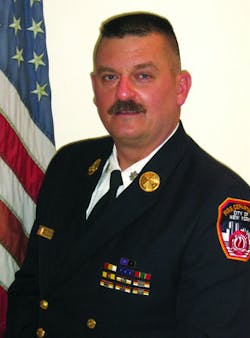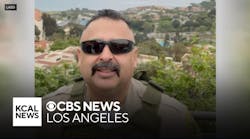With all the talk these days about some of the new ways to do things, I started to think back on the changes in the fire service during my career. I joined the fire service in 1976 and will have 40 years in this business next year. I’ve been fortunate enough to have served in four different departments in two states and I’ve been watching things change since day one. Let’s look at some of the more memorable things that have changed the way we all do our work.
Protecting firefighters
One of the first dramatic changes I remember is the introduction and use of turnout gear. When I started we had a helmet, a coat and a pair of boots. It seemed just fine to me and it was quite easy to get dressed – and fast too. I went to plenty of fires and emergencies wearing that gear and it made no sense at all to switch to this cumbersome gear. It slowed us down, it was hot and it made climbing through a window and many other activities more difficult. Well, the change was made in spite of our protests and the long coat and roll-up boots quickly faded into fire service history. Did I mention that this new gear was safer and reduced burns and other firefighter injuries dramatically? It also kept us northern firefighters warm in winter. Turnout gear changed us all.
Then there was the grand fire service tradition of riding the back step of the engine (the folks who put the fire out!). I remember riding the back step in my early years with the FDNY and even before that, I remember riding the side step on the 100-foot aerial ladder truck in the Mineola Fire Department on Long Island. Riding outside was a blast. You could see everything and everyone could see you. We didn’t like it or do it so much in the winter, but believe me it was fantastic. Then they told us, “No more riding the back step.” What a bunch of nonsense that was. Didn’t they know this was going to slow us down? Couldn’t they see that we wouldn’t be able to look down the street as we arrived at a fire to see what side of the street to house was on and if smoke was showing? Well, as you know it happened and we never looked back.
Does your department have a hydraulic forcible entry tool on a rig? I remember when one of the very first ones was brought into Rescue 3 by then-Lieutenant Marty McTigue. It didn’t go over well. The well-seasoned firefighters of that unit knew quite well how to force any door anywhere and didn’t need any help, thank you very much! After being thrown out the back door as the rig rolled out of quarters several times, it finally made it to a few fires. After a few fire scene appearances, someone (I’ll never tell) actually carried it up to the fire floor and wow, did that thing work well. And fast too. I don’t know how long it took, but just about everybody has one of these tools today. The axe and halligan still work and are still carried, but the hydraulic fire department tool is here to stay.
Hose has changed many times over the years to give us what we have today. When I started, we had 1½-inch and 2½-inch handlines. They worked just fine! Actually, they worked fine for decades. Then someone thought, “Why don’t we make that 1½-inch line a little larger? Let’s make it 1¾ inches in diameter.” Well, that happened and with just a little more weight and effort, we were able to deliver more water to the fire more quickly and do a better and safer job. Then someone said, “Why not try using two-inch hose?” and it too found a place in the hosebed. Do we all carry all of these hose sizes? Do we all like or use two-inch hose? The answer is no, but the changes happened and gave those who wanted to try something new that opportunity.
So what is this change thing going on in the fire service today? I’m hearing people say, “Don’t vent”. I’m hearing people say, “Hit it from the outside first.” I’m hearing people say, “Fire streams don’t push fire.”
I don’t know how much of this is valid or true or correct. I certainly don’t agree with all of the new ideas being bantered about and I seriously doubt others. But I do know one thing: “Nothing works everywhere and everything works somewhere.” And you heard it here!
JOHN J. SALKA Jr., a Firehouse® contributing editor, is a retired FDNY battalion chief who was commander of the 18th Battalion in the Bronx. Salka has instructed at several FDNY training programs, including the department’s Probationary Firefighters School, Captains Management Program and Battalion Chiefs Command Course. He conducts training programs at national and local conferences and has been recognized for his firefighter survival course “Get Out Alive.” Salka co-authored the FDNY Engine Company Operations manual and wrote the book First In, Last Out – Leadership Lessons From the New York Fire Department. He also operates Fire Command Training, a New York-based fire service training and consulting firm.
Connect with John
Email: [email protected]
Website: firecommandtraining.com
Blog: firehouse.com/blogs/the-fire-scene
pull quote:
I’ve been fortunate enough to have served in four different departments in two states and I’ve been watching things change since day one.






